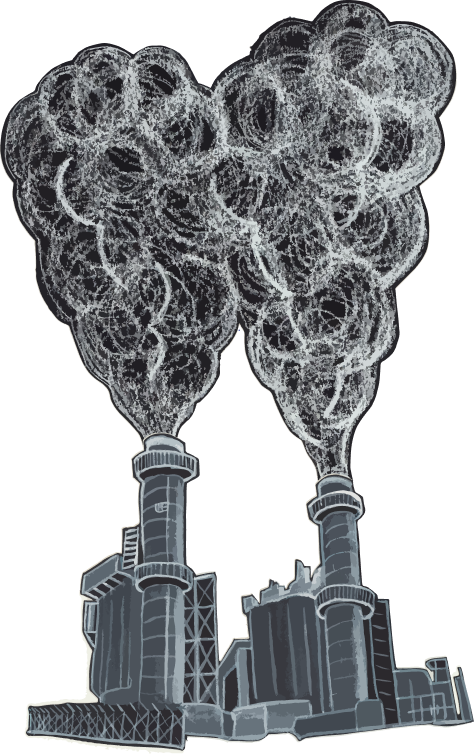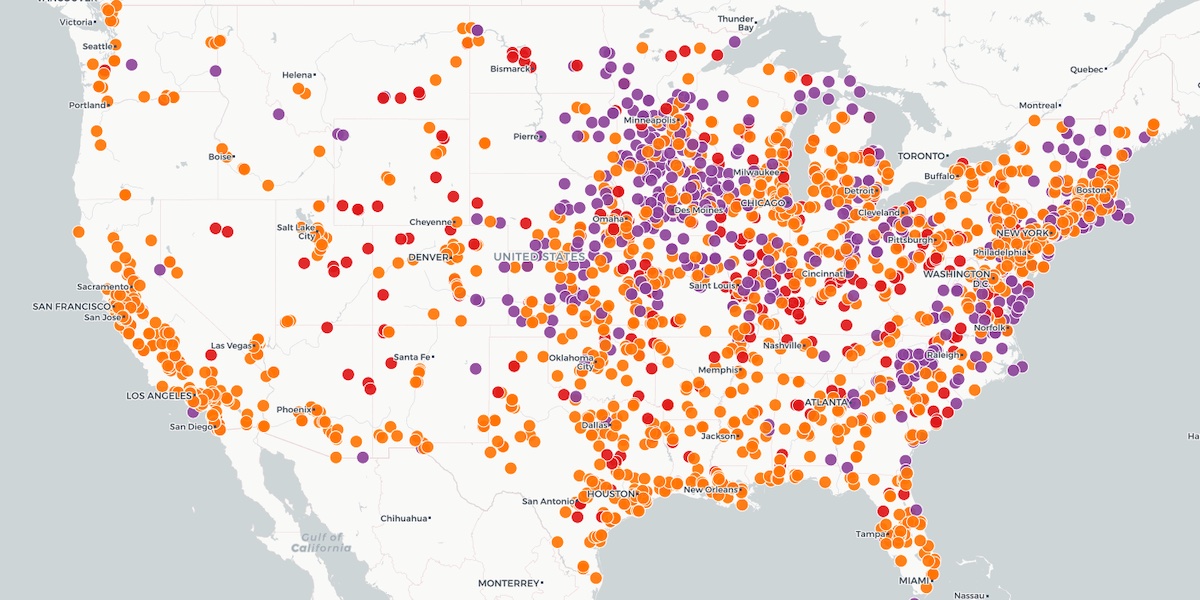North Carolina
Back to mapTo get to zero by 2050, North Carolina must cut emissions by 3.7% a year
Emissions in North Carolina
Million metric tons of carbon dioxide (CO2) [?] equivalent (MTCO2e [?]) emissions
Note: Grey area indicates missing data due to processing delays.
Source: WRI, Mar 2021
This is how we're going to do it
- Boilers and furnaces with heat pumps [?]
- Gas stoves with electric induction stoves [?]
- No-till farming to keep CO2 in the soil
- Capturing methane leaks from landfills
- Capturing CO2 to make emissions-free concrete
- Burning green hydrogen to make emissions-free steel
- Plugging methane leaks from gas pipelines
Decarbonize Our Buildings
8% of North Carolina's climate pollution comes from buildings.
We burn fossil fuels to heat our air, water, and food.
To cut this pollution...
Let's electrify our heat!
We'll replace...
...in all of North Carolina's 4.7 million buildings.
In fact, 60% of appliances in buildings in North Carolina are already fossil fuel free!
That means we only need to electrify the remaining 1.9 million dirty buildings in North Carolina. That's around 69,000 per year.
Source: Microsoft, Mar 2021; NREL, Dec 2021Electrifying all buildings cuts 8% of the pollution.
Decarbonize Our Transport
36% of North Carolina's pollution comes from cars, trucks, trains, and planes.
But mostly from cars.
To cut this pollution,
your next car must be electric.
Or consider going car-free with public transit, bikes/e-bikes, car share, or other alternatives!
There are 3.4 million vehicles in North Carolina and 16,000 are already electric (0.5% of the total).
We need to electrify (or replace) the remaining 3.4 million gas-powered vehicles. That's around 125,000 a year.
Source: DOT, Feb 2021Electrifying all transportation cuts 36% of the pollution.
Decarbonize Our Power
33% of North Carolina's pollution comes from burning coal, gas, and oil to make power.

To cut this pollution...
Put solar panels on your roof!
Then, we'll replace all fossil fuel power plants with solar and wind farms.

...and find good jobs for those workers.
Current Fossil Fuel Power Plants in North Carolina
8 coal plants
Roxboro
Person County
2,575 MW
Cliffside
Cleveland County
2,541 MW
Belews Creek
Stokes County
2,491 MW
Marshall
Catawba County
2,119 MW
Asheville
Buncombe County
1,425 MW
G G Allen
Gaston County
1,148 MW
Mayo
Person County
763 MW
University of NC Chapel Hill
Orange County
56 MW
16 gas plants
H F Lee Steam Electric Plant
Wayne County
2,556 MW
Richmond County Plant
Richmond County
2,245 MW
L V Sutton
New Hanover County
1,614 MW
Cleveland County Generating Facility
Cleveland County
1,472 MW
43 oil plants
Lincoln Combustion Turbine
Lincoln County
2,290 MW
W H Weatherspoon
Robeson County
329 MW
Rosemary Power Station
Halifax County
180 MW
Blewett
Anson County
95 MW
But wait!
It's not enough to replace our power plants with wind and solar farms.
To power our electric cars and buildings, we need two times the electricity we have today.
In all, we'll need to build 9,000 megawatt (MW) [?] of wind power and 10,000 MW of solar power.
Since the average wind turbine provides 2.75 MW of peak capacity, North Carolina would need to install about 3,000 turbines.
Since North Carolina already has 58 MW of wind and 1,000 MW of solar, that's 9,000 MW of wind power we need to build and 9,000 MW of solar power. That's around 346 MW of wind power and 339 MW of solar power a year.
Source: EIA, Apr 2022Decarbonizing all dirty power cuts 33% of the pollution.
And gives us zero-emissions power we need to eliminate pollution from buildings and cars!
Other Emissions
The last 23% of North Carolina's climate pollution comes from other sources...
This includes farming, landfills, industry, and leaks from gas pipelines.
There's no one solution to solve these problems, but there are lots of great ideas:
That doesn't mean there's no solution, it just means that clean electrification [?] doesn't help with these problems, and you could fill a whole book with covering all of them. We need to encourage our politicians to invest in researching new solutions and implementing existing solutions to these problems!
Ready to do your part?
Learn how to electrify your own machines and pass local policy to electrify the rest
Take Action